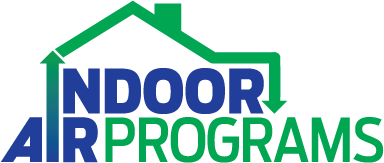The US EPA has recognized the need for indoor air quality programs for schools and has an extremely comprehensive program for schools. You can read why at the EPA website on the impact indoor air quality has on learning in the classroom. https://www.epa.gov/iaq-schools
The great news about this program is that it has everything a school would need to operate an indoor air program.
The bad news is that is has everything a school would need to operate an indoor air program.
The amount of information is overwhelming for the typical facilities maintenance team at a school. Most often the team is pulled in so many different directions that they end up being mostly reactive to the day to day maintenance needs of a school. There is very little time to be proactive, let alone try to filter through the immense amount of information that can be found on the internet and/or on the EPA website.
The EPA’s website has a coordinator’s guide, an action kit that explains the 6 key drivers, the framework which explains the 7 technical solutions, more than 15 webinars, 11 checklists for areas of the school, an app to be used as a tool, parental information, community awareness, documented cost savings from indoor air quality programs, and documented improved academic performance from indoor air quality programs, just to name some of the resources available.
The amount of information available tends to prohibit typical school facilities personnel from finding usable information quickly and create difficulty in understanding of what the program actually is and can do.
Studies have demonstrated that the investment in improved indoor air quality is a cost savings for the school, according to the EPA. Increased attendance can impact funding, proper preventative maintenance extends the life of equipment and buildings, and energy savings for heating and cooling are just a few examples of the positive financial impact for the school.
Schools that have implemented an indoor air quality program have demonstrated the positive impact they make on the community.
Help is available. The following are the most common areas that we can provide value.
- Provide an overview of the program to the board, executive cabinet, director of facilities, or other stakeholders.
- Provide comprehensive documentation of fiscal success in other districts.
- Provide comprehensive documentation of the impact of IAQ on learning.
- Provide an overview of the program to the facilities team.
- Leadership in development of the IAQ program objective(s) for your school.
- Leadership in execution of the program, which can include team member selection, timelines, metrics, communication, and other action items.
- Capitalizing on the positive impact the program can make with employee engagement and community relations, with developing appropriate internal and external PR programs.
- Training of designated staff on IAQ fundamentals, such as conducting walk throughs, tools, controlling moisture and understanding ventilation.
- Train the IAQ team on using the resources provided.
- Evaluate the effectiveness of the program.
Whether you have one building or a large district, implementing tools for schools is not only cost effective, it is the right thing to do.
We have the IAQ Master Class certification from the EPA. We have the knowledge and experience to provide guidance in developing your IAQ program.
We believe we can make a difference in the lives of our future leaders and it starts with your school.

